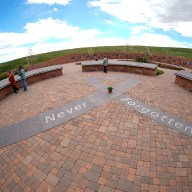 Geno Smith is adapting to taking regular snaps from under center for the first time.
Geno Smith is adapting to taking regular snaps from under center for the first time.
Credit: Getty Images
The transition from college quarterback to the NFL is a complicated one, one made more difficult for Jets rookie Geno Smith as he adapts to playing exclusively under center for the first time in his career.
As a three-year starter at West Virginia, Smith ran the Air Raid offense — almost exclusively out of the shotgun. He will be forced to play under center for the vast majority of the playbook with the Jets. The learning curve is bound to be steep for Smith as everything from footwork to the speed of the pass rush will challenge him.
At the end of minicamp last month, Metro asked Smith about his progress in going from shotgun to the Jets’ West Coast offense.
“I can’t say what the toughest part is, one single aspect of it. I do understand that there is a challenge and like I said, it’s all about getting repetition,” Smith said. “I feel more comfortable with it now than I did when I first got here and that’s just all a part of the learning process but there’s a long ways to go and I’ve got to continue to polish that and get better with it.”
It is more than just a different way of lining up. The speed of the game, and the pass rush in particular, is much different under center. Whether a 3-step drop, 5-step drop or even a 7-step drop, a quarterback will feel the rush off the edge and from the gaps much faster than in the shotgun where the depth of the snap gives him an extra moment to scan the field.
Terry Shea has worked with a number of college quarterbacks who have transitioned from an offense similar to Smith’s in college. One of those players is Jaguars starting quarterback Blaine Gabbert, who Shea said operated “98 percent” of the time out of the shotgun in college at Missouri.
“It is proven that the shotgun alignment for the quarterback gives him another ‘tick’ of protection time,” Shea said. “Let’s say for example a pass rusher comes off the line of scrimmage clean with the quarterback in the shotgun position. It has been proven that a quarterback attempting to pass [out of the shotgun] can actually release the football before the unblocked rusher can make contact on the passer. From this scenario, I believe that the shotgun depth affords the quarterback more time to release the football than if he were dropping back from under center.”
Shea is a former head coach at Rutgers as well as the author of “Eyes Up,” a comprehensive book devoted to quarterback drills and skills. He has done pre-NFL Draft mentoring for Matthew Stafford, Sam Bradford and Robert Griffin III among others.
Unlike in the shotgun, a quarterback in the West Coast offense typically needs to drop back from directly under center. In the shotgun, footwork isn’t as crucial as it is under center, which gives Smith yet another avenue for improvement. In rookie minicamp and mandatory minicamp in June, he showed signs of struggles with his drop-back footwork.
Leading up to the NFL Draft, Pro Football Weekly’s Nolan Nawrocki assessed Smith as having “shaky lower-body mechanics,” which could be exasperated by having to drop back under center.
“The first step must give the quarterback separation from the initial line of scrimmage,” Shea said. “The first step developed must be dynamic because the race is not between the receiver and the defender or the pass protector and the pass rusher, but the race is always between the quarterback and the pass rusher.”
Shea also noted that a further wrinkle in this development process will be Smith’s eyes. As he drops back from under center, the quarterback must scan the field not only for the pass rush but also to begin his progression. There’s his “hot read” as well as the secondary reads and his outlet pass. All this must be done while the football is secured and he has taken his steps back in the pocket. In short, his footwork must be automatic, because mentally he must read the field as he drops back. Otherwise, he’s picking himself up off the turf at the end of the play.
“The shotgun doesn’t require as many steps in the drop. The line of vision is higher at the start. Reading the defense has to be made while backpedaling if one is under center,” said Dr. Eric Goff, the chair of the physics department at Lynchburg University, who was asked by Metro to examine how the physics of starting under center affects a quarterback. He is the author of the critically acclaimed book “Gold Medal Physics: The Science of Sports.” “Smith will have to get used to a beefier line with a tight end. Forget the pistol formation that he ran at West Virginia sometimes. Smith will obviously have to get used to coming out from under center, reading defenses while moving backward, planting and throwing rather quickly. Stepping into the pocket is certainly something Smith will have to get used to, especially with tight ends in pass protection.”
It won’t be easy, cautions Shea, who said there is not an exact time frame to determine when a quarterback can and should make the transition from a college shotgun offense to one such as the West Coast used by the Jets.
Smith will be asked to drastically change his approach to the game in the pros, no change bigger than starting under center.
“The shotgun passer must catch the snap before he can use his vision up the field. This is where a quarterback who has quick eyes has the ability to read and key coverages as he is dropping back. The drop of the quarterback— if taught properly— gives the quarterback rhythm and balance if he is coached to shorten [or] quicken the last two steps of a 5-step drop or the last four steps of a 7-step drop,” Shea said. “Thus, the learning curve of a Geno Smith coming from college to pro with the Jets coaches defining the quarterback competition with ‘Geno needs more time to develop his West Coast fundamentals.’ [It] should come as no surprise to anyone since they knew exactly what they were drafting by taking Geno Smith out of [a] college system that was the exact opposite to the Jets’ system.”
Follow Jets beat writer Kristian Dyer on Twitter @KristianRDyer.















